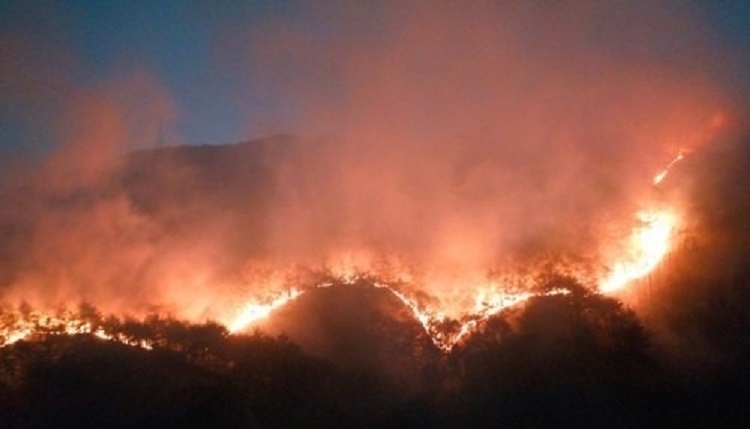New Delhi: Deadly wildfires, noise pollution, and other looming environmental threats could cause widespread ecological damage, and need to be urgently addressed, the UN Environment Programme (UNEP) said in a new report.
“The Frontiers Report identifies and offers solutions to three environmental issues that merit attention and action from governments and the public at large,” said UNEP Executive Director Inger Andersen.
“Noise, Blazes and Mismatches: Emerging Issues of Environmental Concern” draws attention to emerging environmental concerns with the potential to wreak regional or global havoc, if not addressed early.
The report released late Thursday night India time, days before the UN Environment Assembly (UNEA) resumes early in March, spotlights growing public health threats that are disrupting natural life cycles and having profound ecological consequences worldwide.
“Urban noise pollution, wildfires and phenological shifts – the three topics of this Frontiers Report – are issues that highlight the urgent need to address the triple planetary crisis of climate change, pollution and biodiversity loss,” said Andersen.
Terming noise pollution “a raucous killer”, it said that unwanted, prolonged, and high-level sounds from road traffic, railways, or leisure activities, impair human health and well-being.
Chronic annoyance and sleep disturbance caused by traffic can result in severe heart diseases and metabolic disorders with the very young, and mostly affect the elderly and marginalised communities near busy roads.
The report encourages urban planners to prioritise noise reduction by investing in urban infrastructure that creates positive soundscapes such as tree belts, green walls, and more green spaces in cities – also offering diverse health benefits.
Phenology is the timing of recurring life cycle stages, driven by environmental forces, and how species interacting within an ecosystem, respond to changing conditions.
Plants and animals in terrestrial, aquatic and marine ecosystems use temperature, day length or rainfall as cues for when to bear fruit, migrate or transform in other ways.
However, climate change disrupts these natural rhythms as plants and animals are being pushed out of sync with their natural rhythms, leading to mismatches, such as when plants shift life cycle stages faster than herbivores, the report said.
Meanwhile, local climatic cues that trigger migration for birds may no longer accurately predict conditions at their destination and resting sites along the route. And in crops, phenological shifts in seasonal variations challenge food production.
The report flags the crucial importance of conservation goals, such as maintaining suitable habitats and ecological connectivity, strengthening the integrity of biological diversity, and coordinating international efforts along migratory routes.
The report also outlined that between 2002 and 2016, an average of 423 million hectares of the land surface – about the size of the European Union – burned, projecting that the dangerous wildfires will likely become more frequent, intense, and longer lasting, including in areas previously unaffected by fires.
Climate change can prompt extreme wildfires, generating lightning that can ignite other fires, far beyond the fire front and creating a so-called hazardous feedback loop.
Long-term effects on human health extend beyond those fighting wildfires, or the evacuated, or those who have lost homes, and exacerbate impacts among those with pre-existing illness, women, children, the elderly, and the poor.
At the same time, black carbon and other pollutants generated from wildfires can contaminate water sources, speed up glacier melt, trigger landslides and turn rainforests into carbon sinks, it said.
The report calls for greater investment in reducing wildfire risks; developing prevention and response management approaches; and refinancing remote sensing capabilities.
(IANS)



















